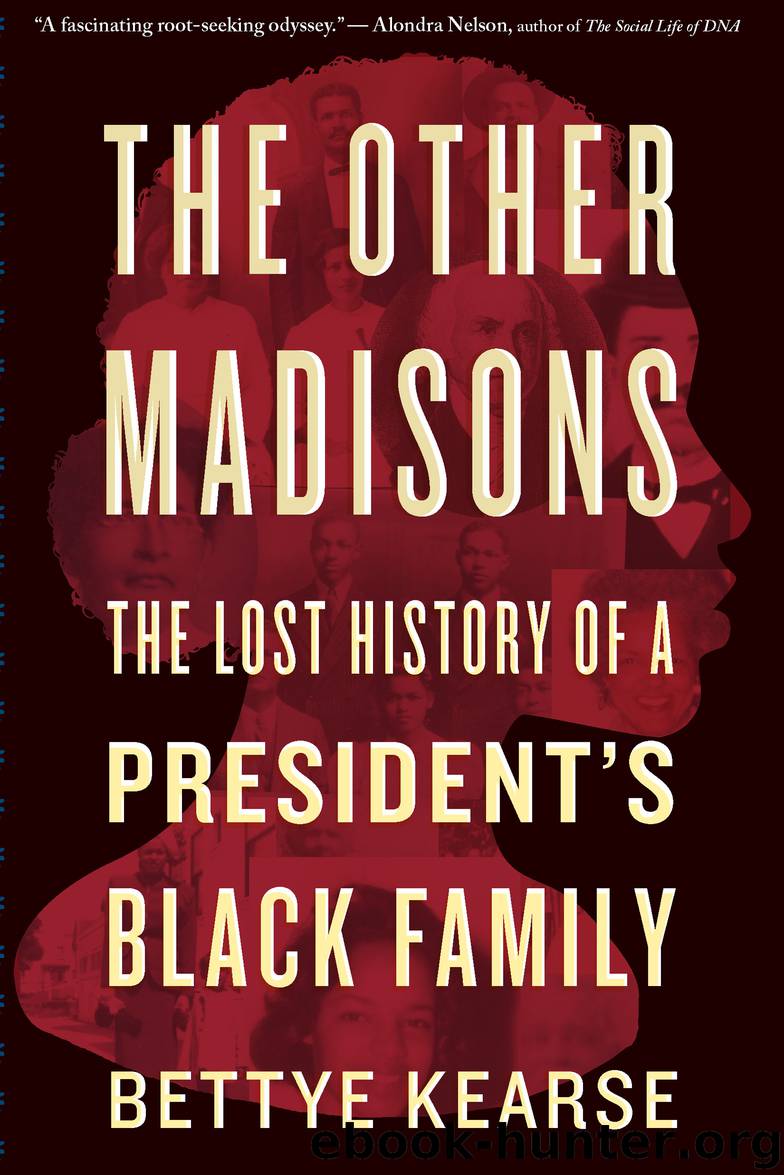The Other Madisons by Bettye Kearse

Author:Bettye Kearse
Language: eng
Format: epub
Publisher: HMH Books
Bonnie and I continued through the museum, taking in representations of slave auctions, the financially crippling and socially demeaning post–Civil War sharecropping system, and a black woman drinking from a rust-stained, cracked water fountain during the Jim Crow era. We saw true-to-life wax figures of African-American heroes of the nineteenth and twentieth centuries, including Sojourner Truth, Booker T. Washington, W.E.B. Du Bois, and Martin Luther King Jr. I looked at each exhibit and read each plaque, but I could not keep my mind off that black woman’s rape.
After more than two hours in the museum, Bonnie and I left and began the ride back to her home. Since entering the slave ship, we had not spoken.
Finally, she asked, “You okay?”
“I don’t know.”
The winter clouds had vanished, but the late-afternoon air remained so cold, the car windows fogged over. Bonnie turned up the defroster, but still, we could not see out. She pulled to the side of the road and waited for the windows to clear. We shivered, our breaths cones of white mist.
The screams and moans from the slave ship persisted in my mind. They drowned out the whirring of the car fan and the droning of the engine. I felt entombed, trapped in a ship’s hold. I wondered if Bonnie did too.
On average, fifteen to twenty of every one hundred Africans died during the Middle Passage, but the mortality rate was sometimes as high as 50 percent. The captives, naked and dehumanized, suffered unconscionable cruelty. They were chained, shackled, beaten, starved, mutilated, and raped. Some were tortured with thumbscrews, iron collars, or red-hot metal prods.
Though some crews tried to minimize the rate of death, disability, and injury among the human cargo, there was always some “wastage” that was tossed into the ocean as the ship sailed along. No matter how “humane” the crew, many Africans died before the ship reached its destination. But millions of stolen people—those, like Mandy, who called forth profound physical and mental fortitude—managed to survive the voyage, only to begin a life of bondage.
Would I have made it to the New World? In the museum, I’d imagined myself not as an observer of the rape, but its victim. I’d envisioned lying among up to a thousand fellow hostages, many dying of dehydration, measles, smallpox, dysentery, cholera, malaria, or pneumonia. We lay stacked between tiers of wooden platforms only two to four feet high. But I could not imagine being so desperate for air that I would strangle or bludgeon fellow prisoners to death. That level of anguish and fear was far beyond any emotion I knew.
Some prisoners hanged themselves, refused to eat and drink, or jumped overboard. And when no other means of death was available, some captives ripped out their tongues and choked themselves. Some went mad. Would I have been so desolate? Would I have risked my life to help the children, the most fragile of the captives?
From time to time during the transatlantic voyage, the crew forced the survivors, the “lucky” ones, up to the deck to dance for the amusement of the captain and other officers.
Download
This site does not store any files on its server. We only index and link to content provided by other sites. Please contact the content providers to delete copyright contents if any and email us, we'll remove relevant links or contents immediately.
| Africa | Asia |
| Canadian | Europe |
| Holocaust | Latin America |
| Middle East | United States |
Fanny Burney by Claire Harman(26525)
Empire of the Sikhs by Patwant Singh(22974)
Out of India by Michael Foss(16790)
Leonardo da Vinci by Walter Isaacson(13179)
Small Great Things by Jodi Picoult(7019)
The Six Wives Of Henry VIII (WOMEN IN HISTORY) by Fraser Antonia(5394)
The Wind in My Hair by Masih Alinejad(5033)
A Higher Loyalty: Truth, Lies, and Leadership by James Comey(4840)
The Lonely City by Olivia Laing(4746)
The Crown by Robert Lacey(4722)
Millionaire: The Philanderer, Gambler, and Duelist Who Invented Modern Finance by Janet Gleeson(4374)
The Iron Duke by The Iron Duke(4291)
Papillon (English) by Henri Charrière(4195)
Sticky Fingers by Joe Hagan(4100)
Joan of Arc by Mary Gordon(4013)
Alive: The Story of the Andes Survivors by Piers Paul Read(3967)
Stalin by Stephen Kotkin(3875)
Aleister Crowley: The Biography by Tobias Churton(3586)
Ants Among Elephants by Sujatha Gidla(3417)
